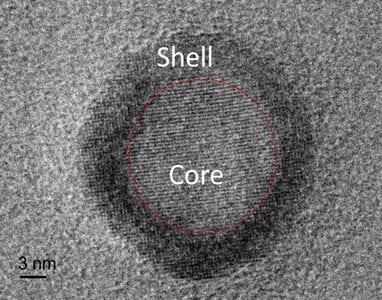High-density lipoprotein’s hauls excess cholesterol to the liver for disposal, but new research suggests “good cholesterol” can also act as a special delivery vehicle of destruction for cancer.
Synthetic HDL nanoparticles loaded with small interfering RNA to silence cancer-promoting genes selectively shrunk or destroyed ovarian cancer tumors in mice, a research team led by scientists from The University of Texas MD Anderson Cancer Center and the University of North Texas Health Science Center reports in the April edition of Neoplasia.
“RNA interference has great therapeutic potential but delivering it to cancer cells has been problematic,” said Anil Sood, M.D., the study’s senior author and MD Anderson’s director of Ovarian Cancer Research and co-director of the Center for RNA Interference and Non-Coding RNA at MD Anderson. “Combining siRNA with HDL provides an efficient way to get these molecules to their targets. This study has several important implications in the ability to fight certain cancers.”
Sood and Andras Lacko, Ph.D., professor of Molecular Biology and Immunology at UNT Health Science Center, jointly developed the nanoparticles, which build on Lacko’s original insight about HDL’s potential for cancer drug delivery.
The next step is to prepare for human clinical trials, the two scientists said. “If we can knock out 70, 80 or 90 percent of tumors without drug accumulation in normal tissues in mice, it is likely that many cancer patients could benefit from this new type of treatment in the long run,” Lacko said.
Only cancer and liver cells express HDL receptor
Previous studies have shown that cancer cells attract and scavenge HDL by producing high levels of its receptor, SR-B1. As cancer cells take in HDL, they grow and proliferate. The only other site in the body that makes SR-B1 receptor is the liver. This selectivity for cancer cells protects normal, healthy cells from side effects.
Previous attempts to deliver siRNA by lipsomes and other nanoparticles have been hampered by toxicity and other concerns. The tiny bits of RNA, which regulate genes in a highly targeted fashion, can’t simply be injected, for example.
“If siRNA is not in a nanoparticle, it gets broken down and excreted before it can be effective,” Sood said. “HDL is completely biocompatible and is a safety improvement over other types of nanoparticles.”
The team developed a synthetic version of HDL, called rHDL, because it’s more stable than the natural version.










